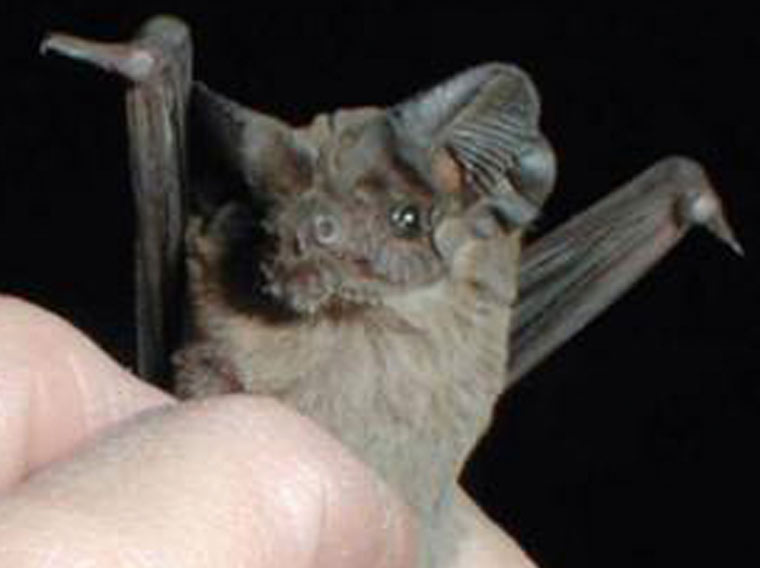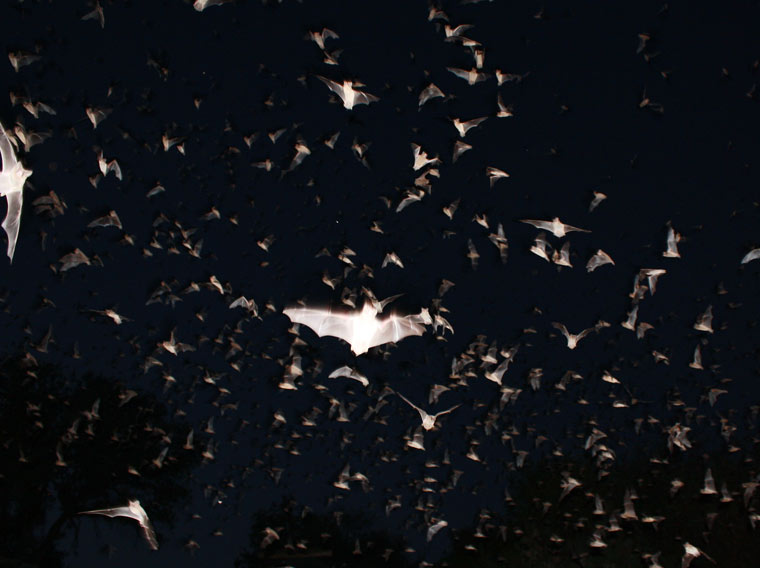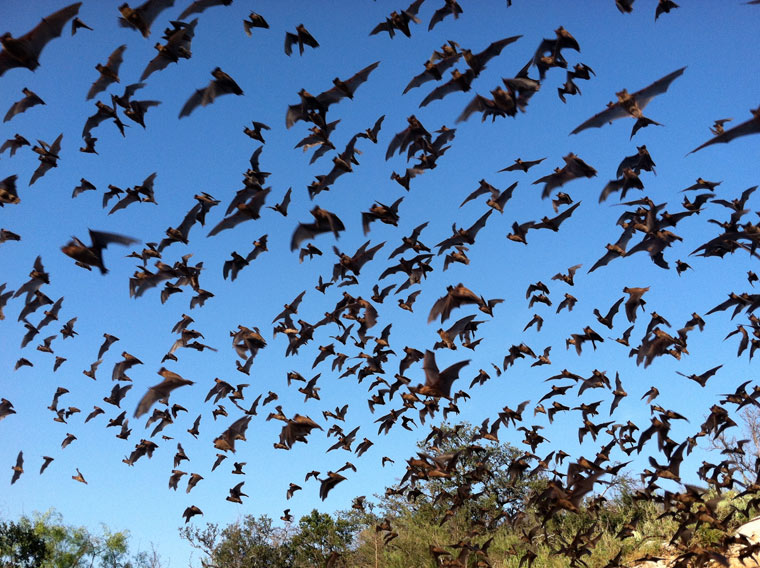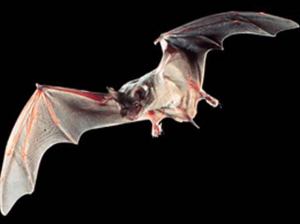Brazilian Free-Tailed Bat
From May to October, one of the greatest wildlife spectacles ever seen occurs each night at Carlsbad Caverns. Visitors gather in the amphitheater at the Natural Entrance to the Caverns to witness hundreds of thousands of bats emerge from Bat Cave to go on their nightly foray to hunt insects.
Although there are sixteen species of bats in the Park, by far the most numerous is the Brazilian Free-tail, known as the speedsters of the bat world. They travel 10 to 25 miles each night toward the Pecos and Black River valleys where they hunt and devour their favorite food—moths. The Cavern’s colony alone consumes four to six thousand pounds of insects each night and about half their diet consists of pests that feed on alfalfa and cotton crops. Those pests could cost farmers and foresters millions of dollars. Instead, bats are a free, effective, and a natural part of the environment that control destructive insects.



These bats travel 10-25 miles each night looking for insects to eat.
The Caverns support large summer maternity colonies of the Brazilian Free-tail. These bats winter in Mexico, and mate there as well. In the spring, they leave for their summer home at the Cavern. Females give birth to a single “pup,” during late June and early July. The mother bat grooms and feeds her pup immediately, building a bond and each learning the other’s scent. As more and more pups are born, the walls of Bat Cave become a sea of squirming, squeaking, tiny bodies—thousands of them—calling for their mother. Each mother can locate her pup through voice and scent.
By August, the males and the nursing females are joined by their four-to-five-week-old pups on the nightly foray, making the remarkable scene of the Bat Cave exodus denser, the sky blacker with many more thousands of bats.

Today, bat populations are declining, but conservation efforts are achieving major successes.

The return to the Cavern at dawn is just as remarkable, but rarely witnessed by visitors. The bats free-fall at speeds up to 50 miles per hour, then alternately close and open their wings to control speed and direction. This breaking action produces the buzz that observers hear.
Today, bat populations are declining, but conservation efforts are achieving major successes. What can you do? Join the Park’s Adopt-a-Bat program, educate your friends, put a bat house in your backyard and dispel the myths about bats.
EXPLORE. DISCOVER. MAKE MEMORIES.
